Blog categories
Blog archive
RSS Blog posts tagged with 'interior design'
Blog Filters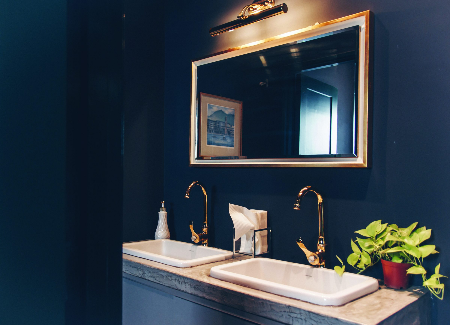
Sunlit Bathrooms: Inspirational Modern Washrooms Drenched in Natural Light
Friday, November 20, 2020
In the words of the American author Annie Dillard: "There is a muscular energy in sunlight corresponding to the spiritual energy of wind."—and since nothing paints a space quite like natural light does, we rounded up the most inspiring washrooms from recent memory to help you find ways of incorporating a generous window into your bathroom.
Augmented Shadows
 Interior design by: Bo Design
Interior design by: Bo Design
[gallery size="medium" ids="58660,58658,58657,58656,58653,58652" orderby="rand"]
Violet Tone
 Interior design by: ID Industries
Interior design by: ID Industries
Sky Blue
 Interior design by: Space In Design
Interior design by: Space In Design
[gallery columns="2" size="large" ids="58547,58546"]
[gallery columns="2" size="large" ids="58691,58692"]
Sea Green
 Interior design by: A Piece of Art
Interior design by: A Piece of Art
 Interior design by: A Piece of Art
Interior design by: A Piece of Art
 Interior design by: SQFT Space Design Management
Interior design by: SQFT Space Design Management
Sunny Yellow
 Interior design by: Gusto Design & Build
Interior design by: Gusto Design & Build
 Interior design by: Gusto Design & Build
Interior design by: Gusto Design & Build
 Interior design by: Hoe & Yin Design Studio
Interior design by: Hoe & Yin Design Studio
Golden Tangerine
 Interior design by: Design Integra
Interior design by: Design Integra
Brick Red
[gallery columns="2" size="medium" ids="58567,58568"] Interior design by: SNG Conceptwerke
Interior design by: SNG Conceptwerke
Pristine White
[gallery columns="2" size="medium" ids="58699,58700"] Interior design by: Regal Violet
Interior design by: Regal Violet
 Interior design by: PSQ
Interior design by: PSQ
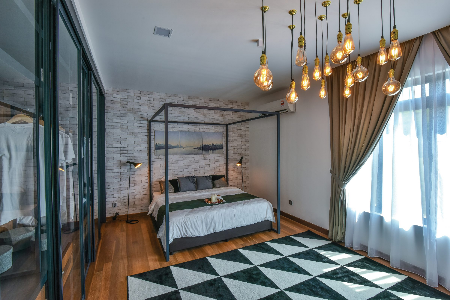
4 Bedroom Styles To Inspire You
Friday, November 20, 2020
Undecided as to whether you find comfort in simplicity, or pine for the ornate antiquities of times past? This summary of common bedroom styles will point you in the right direction.
It takes a highly proficient mind-reader to accurately determine the kind of decorative style that appeals to any individual - and while the most seasoned practitioners of interior design may be able to guess your preferences from a few brief interactions, there is no better judge of one’s own position on the spectrum of order and chaos than the self.
While the less private areas of a home may feature a décor to impress, the bedroom is largely a concern for the occupant - so before settling on your choice of furniture and materials for the bedroom, take a look at this introduction to the most common styles of décor and decide on which speaks to you the most.
Industrial Chic
 Interior design by: Homlux Interior Furnishing
Interior design by: Homlux Interior Furnishing
Some personalities gravitate towards ornate classicism for the grandeur, and others find minimalism appealing for the sake of simplicity – but the aesthetics of industrial style appeals to those who seek a lightweight décor imbued with aged sophistication. As with the pictured bedroom decorated by Homlux Interior Furnishing, a bedroom can be made industrial as a whole – with a strict reliance on materials commonly found in places of work, or a more eclectic décor can be formed with a sprinkling of a few bare light bulbs hanging by their wires, pieces of patinated metals, and stretches of exposed brickwork.
Mod Pop
 Interior design by: Casa Indah Design
Interior design by: Casa Indah Design
It goes without saying that the neutral palette dominates most interiors in the present age, but an over-reliance on the popular colour scheme may result in a sterile and impersonal décor. Rather than completely adhering to the confines of the neutral palette, designers and homeowners tend to agree that bedrooms should be canvases for expressions of personality.
 Interior design by: Casa Indah Design
Interior design by: Casa Indah Design
The pictured bedroom is saturated with neutral hues in adherence to modern convention, but the space is marked out as belonging to a youthful urbanite with vibrant splashes of yellow – presented in well-lit box niches against the subtle background of the walls.
 Interior design by: Casa Indah Design
Interior design by: Casa Indah Design
Contemporary Elegance
 Interior design by: Surface R
Interior design by: Surface R
Between the overstuffed upholstery of tradition and the bare-bones designs of minimalism lies the modern definition of luxury - as depicted in cosy bedspreads, plush curtains, and thick mattresses of high-end hotel rooms. In the pictured bedroom, Surface R demonstrates the kind of elegant results to be expected with a focus on comfort.
 Interior design by: Surface R
Interior design by: Surface R
The neutral-coloured décor is made inviting by saturation in rich textiles and brought to opulent heights with an abundance of reflective surfaces, darkly-lacquered wood, and strategically placed lighting fixtures to soften the straight lines and stark edges of modern design.
 Interior design by: Surface R
Interior design by: Surface R
Tip: Keeping the colours subtle and letting the fuzzy textures speak for themselves gets you the comfort, while dark wood and reflective metals provide the elegance.
 Interior design by: Surface R
Interior design by: Surface R
Countryside Charm
 Interior design by: JCS Design Project
Interior design by: JCS Design Project
There are few substitutes for the exquisite and romantic qualities of classicism as a style of interior decoration — largely as it entails a dependence on ornate furnishings that have been passed over by the masses in favour of more affordable and mass-produced offerings, resulting in classical furnishings being considered more valuable due to the relative scarcity of historically accurate designs. As in the pictured bedroom decorated by the JCS Design Project, when combined with soft colours, delicate fabrics, and floral motifs, the result is a feminine décor that speaks of wealth in the quaint serenity of the countryside.
 Interior design by: JCS Design Project
Interior design by: JCS Design Project
Tip: Classical furnishings are just as versatile as those of the modern variety: surround reproductions with decorative details to reinforce a traditional décor or draw attention to authentic pieces by keeping the scene clear.
 Interior design by: JCS Design Project
Interior design by: JCS Design Project
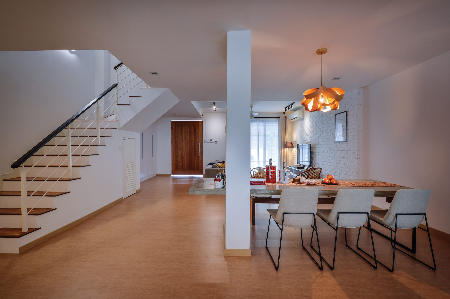
4 Ways to Use a Bench in the Dining Room
Friday, November 20, 2020
Create more space with a bench at the dining table and camouflage the arrangement with these tips.
You may have deliberately sought out a bench as a novel form of seating, or you might already possess a bench needing new purpose—either way, incorporating a bench into your dining arrangement could do more than free up some space. A bench helps to create a casual and intimate atmosphere for meals, and in place of two side chairs, takes up significantly less space. The extra floor space can then go towards greater clearance around the dining table, providing generous elbow room for diners, or even cabinets for additional storage options. If you are faced with an especially compact dining space, read on, as you may find one or two practical ideas for slipping a bench into your dining arrangement.
Island Ally
 Interior design by: Yong Studio
Interior design by: Yong Studio
Having found an available wall against which to set your dining arrangement, your next concern would be to ensure the furnishings complement the surroundings. In the pictured home decorated by Yong Studio, the bench is composed from wood that is similar in shade and grain to the floor of the kitchen. This exercise in unification is applied to the other components of the dining arrangement: the table features unobtrusive legs of minimalist design, while the material of its surface is echoed on the other side of the wall in a diminutive shelf, and in the background, with the kitchen island.
 Interior design by: Yong Studio
Interior design by: Yong Studio
Luxury Lines
As benches typically entail the absence of a back, the natural impulse in dealing with a bench would be to place it alongside a wall for back support. The wall-hugging arrangement, however, does more than free up space: beyond the practical consideration of ergonomics, the linear arrangement demonstrated by Surface R takes advantage of the Helmholtz illusion—a concept popularly applied in fashion to skew the perception of body contours. Just as with waistlines, the array of straight lines makes the pictured dining space seem wider and brings the furniture arrangement into golden proportions with the long and narrow space.
 Interior design by: Surface R
Interior design by: Surface R
Tip: The Golden Ratio is one of the few aesthetic rules, if not the only one, that governs everything from the composition of art to the distribution of leaves along a branch. To form the most visually appealing composition possible, divide the length of a rectangle by the width and you should arrive at a figure approaching the Golden Ratio (φ = 1.618).
 Interior design by: Surface R
Interior design by: Surface R
Divide & Conquer
 Interior design by: Jashen Interior Design
Interior design by: Jashen Interior Design
In tighter quarters, the placement of a dining surface against the wall is often necessary to preserve enough space for comfortably manoeuvring around the arrangement. In such a configuration, the substitution of two side chairs for a single bench frees up even more space, but requires that the bench be pulled out when needed and stowed when not in use. As Jashen Interior Design demonstrates with the pictured home, a wall bisecting the open layout is utilised as a background for the dining arrangement, with the bench tucked between the table legs to leave enough width for a walkway.
 Interior design by: Jashen Interior Design
Interior design by: Jashen Interior Design
 Interior design by: Jashen Interior Design
Interior design by: Jashen Interior Design
Focal Feature
 Interior design by: Jashen Interior Design
Interior design by: Jashen Interior Design
The open layout entailing fewer bisecting walls by definition, you may be hard-pressed to find a wall-hugging spot for your bench-augmented dining arrangement. If you find no free walls available, there exists the possibility for creative expression with a built-up partition. Without a readily available wall in the pictured open layout, Jashen Interior Design incorporates the bench side of this dining arrangement into a false wall built largely to serve as a decorative feature and primary focal point for the space. To keep the divider from overwhelming the open layout, a sizable portion of the wall is rendered reflective.
 Interior design by: Jashen Interior Design
Interior design by: Jashen Interior Design
Tip: While projecting walls may detract from the spaciousness of an open layout, the up-side is that any interruptions to the open layout you design will automatically become a point of focus in the scene and another available plane to embellish with messages or functional additions.
 Interior design by: Jashen Interior Design
Interior design by: Jashen Interior Design
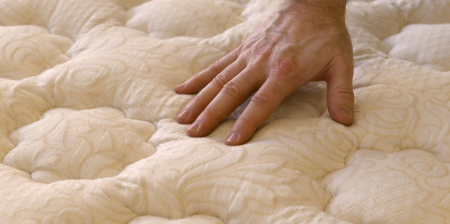
Perfect Mattress: 3 Key Tips to Buy The Ideal Mattress
Friday, November 20, 2020
All of us desire a good night's sleep. Here's where choosing the right mattress can help ensure a serene slumber all night long. When you're getting a new bed, it's crucial to invest in a high quality mattress. As we spend a third of lives sleeping, a suitable mattress will help you sleep better and thus improve your physical, mental and emotional well-being. Here are some tips to arm yourself with when you go shopping for a new mattress. 1 Test for comfort and support Make sure that the surface is both comfortable and supportive of your spine and posture. This means your spine should be in its natural curvature while you lie down flat on the bed. Have someone put his or her hand behind the small of your back. If the person's hand can move easily in the back without any gaps, the mattress is suitable for your posture. If there is a gap in between, the mattress is too hard and not supporting your back properly. If the person cannot get his or hand under your back, the mattress is too soft which causes your back to round up. Also lie on your side and stomach and examine if it's comfortable for you. Always take your time when shopping for a new mattress. 2 Find a mattress that suits your sleep style
How do you sleep? Some of us like sleeping on the back, some can only fall asleep when they are turned to one side and there are others who sleep soundly on their stomach. Your sleeping style is an essential factor when choosing the right kind of mattress.
2 Find a mattress that suits your sleep style
How do you sleep? Some of us like sleeping on the back, some can only fall asleep when they are turned to one side and there are others who sleep soundly on their stomach. Your sleeping style is an essential factor when choosing the right kind of mattress.
 For side sleepers: Get a soft or plush sleeping surface. With extra cushioning, you can prevent pressure-induced discomfort in your shoulders and hips. Plush mattresses offer extra comfort and plush support without the need for additional pillowtop padding.
For back sleepers: Opt for firm or extra firm mattresses as these help to support your back. Firm mattresses generally have a flatter top with no additional padding. Some of them also come with a firm edge support.
For stomach sleepers: Go for a slightly firmer surface so that your spine is properly aligned.
For those who with a combination of sleep styles: You may want to select something that is neither too firm nor too soft so it gives you the flexibility to support your different positions.
3 Consider your sleeping partner
Movements and motion transfers are something to consider if you share your bed with another person. You definitely don't want a mattress that bounces and shakes each time your partner roll to the side or gets up from the bed. Memory foam mattress can help to isolate movements to one side of the bed. You can also go for a hybrid of springs and foam as they usually come with transitional foam that alleviates motion.
For side sleepers: Get a soft or plush sleeping surface. With extra cushioning, you can prevent pressure-induced discomfort in your shoulders and hips. Plush mattresses offer extra comfort and plush support without the need for additional pillowtop padding.
For back sleepers: Opt for firm or extra firm mattresses as these help to support your back. Firm mattresses generally have a flatter top with no additional padding. Some of them also come with a firm edge support.
For stomach sleepers: Go for a slightly firmer surface so that your spine is properly aligned.
For those who with a combination of sleep styles: You may want to select something that is neither too firm nor too soft so it gives you the flexibility to support your different positions.
3 Consider your sleeping partner
Movements and motion transfers are something to consider if you share your bed with another person. You definitely don't want a mattress that bounces and shakes each time your partner roll to the side or gets up from the bed. Memory foam mattress can help to isolate movements to one side of the bed. You can also go for a hybrid of springs and foam as they usually come with transitional foam that alleviates motion.
 Check out our Top 5 Mattress Brands in 2018 post for more ideas.
Check out our Top 5 Mattress Brands in 2018 post for more ideas.
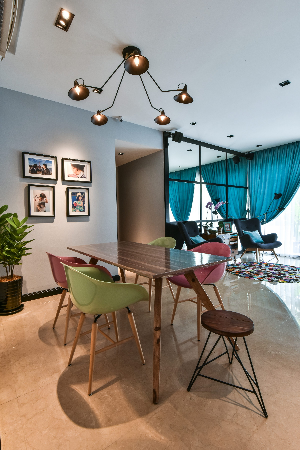
How to Select the Best Dining Table for Your Dining Room
Friday, November 20, 2020
The dining table is most often the central feature of dining spaces, contributing the most towards the décor by virtue of their size - which makes their selection all the more crucial.
The dining room is probably the one part of a home that sees the most people at any time - and whether people are just passing through or sitting down for meals, the table will have an impact on how diners perceive the space, the home, and the homeowner. As the selection of dining room furniture will likely be an event that does not occur very often, we wanted you to be as informed as possible before you set out on your journey towards your new dining table.
Material
 Interior design by: Viincology
Interior design by: Viincology
The kind of material that your dining table is made out of will have an effect on its lifespan and its appearance. Long-lasting materials such as hardwoods, metals, tempered glass, stone, and even mould-injected plastics are preferred for dining tables that are expected to endure many years of heavy use. Conversely, lightweight or flat-pack furniture composed of veneered wood composites such as plywood or fibreboard are made with mobility and affordability in mind, these materials are preferred for short-term arrangements by virtue of their being easier to pack and transport by design.
 Interior design by: Viincology
Interior design by: Viincology
Lightweight composite materials such as plywood or fibreboard are known to be significantly less durable, as they show a tendency to warp when subjected to excessive moisture or heat. Tougher natural materials such as hardwoods and stone tend to be porous, which entail regular maintenance with coats of varnish or sealer to prevent unintended staining from everyday use.
 Interior design by: SNG Conceptwerke
Interior design by: SNG Conceptwerke
Due to their being porous and softer than metal, wooden surfaces entail a greater degree of care to ensure their longevity. Oil-based varnishes should be applied to wooden surfaces at the point of manufacture - and periodically afterwards to prevent unintentional staining. Despite the higher level of maintenance required, metal furnishings tend to rust - especially when used outdoors, while wooden furnishings take on a characteristic smoothness and polished sheen as they age.
Size
 Interior design by: Hoe & Yin Design Studio
Interior design by: Hoe & Yin Design Studio
Having too large a table surface will result in a cramped dining space, while restricting diners to a small surface leads to elbows bumping in uncomfortably close quarters. It is the recommendation of most decorators to provide each diner with around 60 to 70 centimetres (or 24 to 28 inches) of space for adequate elbow room, and around 90 centimetres to 1.3 meters (or 36 to 50 inches) between a dining table and the surrounding walls for diners to comfortably get in and out of their seats.
Shape
 Interior design by: IDS Interior Design
Interior design by: IDS Interior Design
The shape of your dining table will determine the number of diners you can host and will affect the space it occupies. While round tables are capable of accommodating a greater number of diners, they tend to appear larger in small dining spaces - the conventional rectangular dining table takes up the most space, needing long and narrow spaces to avoid appearing overly large.
 Interior design by: IDS Interior Design
Interior design by: IDS Interior Design
To calculate the number of diners appropriate for a round table: multiply the diameter of a table by the value of Pi (π: 3.14) and divide the result by the amount of space needed for each diner. Using the previously mentioned minimum of 60 centimetres (or 24 inches) of space needed per diner, a round table with a diameter of 1.5 meters can easily accommodate 7 diners, or up to 8 diners with a negligible reduction in elbow room - while a rectangular table of similar size (at 1.5 meters long) can only seat a total of 6 diners – one at each end and two along each length.
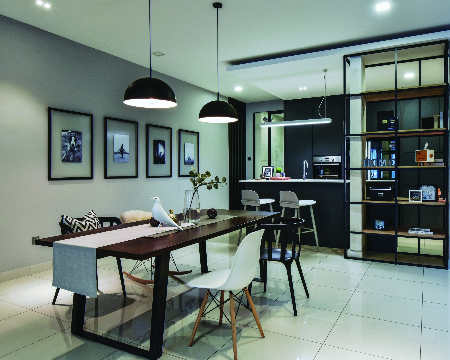
Creating a Well-Composed Dining Room
Friday, November 20, 2020
Whether you have a large formal dining hall or a small area for daily mealtimes next to the living room, here’s how to put together different interior features to ensure your dining room looks and feels good from every angle.
 Interior design by: The Roof Studio
Interior design by: The Roof Studio
Whether you’re hosting a family dinner or just getting together for a weeknight meal, the dining room is where people come together. From modern to classic, there are many ways to turn this room into a cosy space that is perfect for entertaining your guest in comfort and style. Gone are the days when you need to have matching tables and chairs at your dining table. The trend is to go for features that complement each other. If you are going for a modern look, aim for furniture that has clean lines and sturdy material. Also, make good use of tableware to pull it all together.
Palette Play
It's easier to create a well-designed dining room when you have a strong starting point to guide you - this is where having a colour palette in mind can really help you focus on the elements you can use. If you love a certain colour and have a particular hue in mind for your dining room, start with this colour.
 Interior design by: The Roof Studio
Interior design by: The Roof Studio
For example, yellows are a great way to create a bright and vibrant dining space. Start with light yellow for the walls, then add on bolder shades of complementary tones like blues. However if you are not confident about using bold colours, go for a neutral and monochrome palette, like the dining room pictured here.
Accent Pieces
Don't just stop at tables and chairs in the dining room. If you have space, accent furniture like a console or an armoire can work wonders to help create a focal point and enhance those blank walls that envelope your dining area. However, choose something that blends with your dining table.
 Interior design by: Chaplins Furniture
Interior design by: Chaplins Furniture
In this dining room, a bright blue console works beautifully to bring attention to the table. The decorative accessories and mirror above the console add a lively look to the atmosphere. The bold pendant lamps are also just the perfect features to balance off the the space.
Material Maneuver
 Interior design by: Mode Interior Style
Interior design by: Mode Interior Style
Mixing and matching different materials in the dining room can offer a dramatic yet personalised effect to your space. Balance is key, as you don't want a single material to overwhelm the rest. Also offset hard and sturdy surfaces with soft furnishing to give your space a sense of cosy warmth.
 Interior design by: Mode Interior Style
Interior design by: Mode Interior Style
In this dining room, there is a bold variety of materials ranging from solid wood and faux grass to brick-like finishes on the opposite wall. The addition of the marble-like feature wall balances off the dark-coloured surfaces. The use of wood flooring just around the dining space also helps to demarcate the space clearly.
Vibrant Variety
Another way to mix materials is through a variety of different seating and surfaces. Mix-and-match seating works well when each chair or bench is of a similar style and shape. Also think about what you use as centrepieces on your dining table.
 Wood and ratan are making a huge comeback in the dining room, but those from the lighter range are preferred. Go for a Zen effect but break from the monotony with stronger tones and textures. Interior design by: iDecorate
Wood and ratan are making a huge comeback in the dining room, but those from the lighter range are preferred. Go for a Zen effect but break from the monotony with stronger tones and textures. Interior design by: iDecorate
In this warm and neutral dining room, the woven rattan chairs bring a sense of similarity to the entire set, but if you look closely, every single piece is individual in style. To further enhance the room, a tableware set with a similar look and feel is used.
Trendy Tableware
 Interior design by: iDecorate
Interior design by: iDecorate
Finally, complete your dining room with beautiful tableware to bring everything together. When it comes to choosing a dinnerware set, the choice is usually a matter of personal taste. It’s a necessity for any table, but it also sets the mood for a meal. For example, formal china can make a momentous occasion feel even more special, while basic stoneware is a good match for a low-fuss weeknight dinner.
 Colour coordinate your tableware by having a neutral backdrop and then enhancing it with bolder tones through colourful plates, bowls, and mug. Interior design by: Dunelm
Colour coordinate your tableware by having a neutral backdrop and then enhancing it with bolder tones through colourful plates, bowls, and mug. Interior design by: Dunelm
In the example here, a white dinner set complemented by green accents bring out a nature-inspired theme that enhances the wood dining table. To add texture, fabric placemats tone down the hard surfaces and introduce a lush quality to the space.
 Interior design by: Dunelm
Interior design by: Dunelm
Article by: Lily Wong
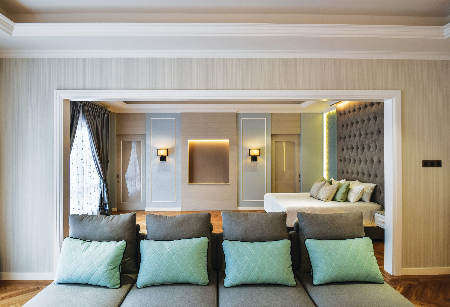
Home Styles: Modern Classic
Friday, November 20, 2020
Antithetical yet complementary: modern classic style is a delicate balance struck between timeless features of tradition and the uncomplicated lines of modern design.

Rare materials transported across great distances, and decorated with finely handcrafted details at incalculable cost – these were the standards of luxury during the immeasurable periods of time that preceded modern mass manufacturing. But as new republics arose from the ashes of old empires, the arrival of the steam engine brought a paradigm shift that led to a global redistribution of wealth and authority – and consequently changed what was considered attractive.
 Tip: Shelves and displays composed from the straight lines of modern design represent an appropriately unobtrusive backdrop for objects of classical antiquity – especially when lit from within hidden recesses. The resulting thematic and visual contrasts of these arrangements make for striking presentations on multiple levels.
Tip: Shelves and displays composed from the straight lines of modern design represent an appropriately unobtrusive backdrop for objects of classical antiquity – especially when lit from within hidden recesses. The resulting thematic and visual contrasts of these arrangements make for striking presentations on multiple levels.
On the rising wave of machine-aided manufacturing, designs for everything from clothing to transportation began to sway towards dependable simplicity and reproducibility, while shying away from the ornate and opulent. Modernism eventually gave rise to minimalism, which sought to strip everything down to its most practical and functional form, but some characteristics of classical luxury endured to the present day – romanticised and emulated either in desperation for emotional expression or admiration for classical antiquity.
This is the very definition of the modern classic decorative style – a union of traditional and modern sensibilities expressed in the choice of furniture and materials to achieve a décor that is simultaneously elegant, timeless, and comforting. Hue Interiors illustrates the definition of modern classic style with the pictured home, which combines modern characteristics – such as a reliance on straight lines and a neutral colour palette consisting largely of grey, white, cream, and beige – with traditional details such as the capitonné upholstered headboard for the bed, wainscoting to vertical surfaces, Damask wall-coverings, and a herringbone pattern in wood on the floor.

While the classically inspired components of the pictured décor are intentionally obvious, the modern sensibilities expressed here are less so. Aside from the neutral palette, other more subtle characteristics of modern style are expressed in the manner of composition – namely: the application of symmetry, visual balance, and a stringent emphasis on using clean lines to serve as a backdrop for the array of classical details.

As Hue Interior demonstrates, the composition of the bedroom in symmetry, the use of neutral shades, in addition to both classical and modern elements presented in harmonious balance help to render the bedroom comforting and unobtrusive – making an ideal backdrop for intricate details drawn from traditional influence. The reliance on straight lines, as portrayed by the bedroom’s fixtures and fittings, provides the very minimum of distinction between objects without detracting from the visual splendour of the classical details.
 Tip: Perhaps due to the paradoxical differences between modernity and classicism, the blending of characteristics from these two decorative styles creates an atmosphere that is at once mystifying and comforting.
Tip: Perhaps due to the paradoxical differences between modernity and classicism, the blending of characteristics from these two decorative styles creates an atmosphere that is at once mystifying and comforting.
In addition to the lush textures and fine details occupying the walls – which already imply a more prosperous and upwardly mobile ambiance on their own – the positioning of ornate furniture, paintings, or sculptures, under the flattering glow of a feature light create additional elements of luxurious elegance against a clean and uncluttered background of straight lines and neutral shades.
 Tip: As demonstrated in the pictured home, there is no ideal proportion of modernity to classicism set in stone – as the decorative palette can be inverted for contrast between spaces.
Tip: As demonstrated in the pictured home, there is no ideal proportion of modernity to classicism set in stone – as the decorative palette can be inverted for contrast between spaces.

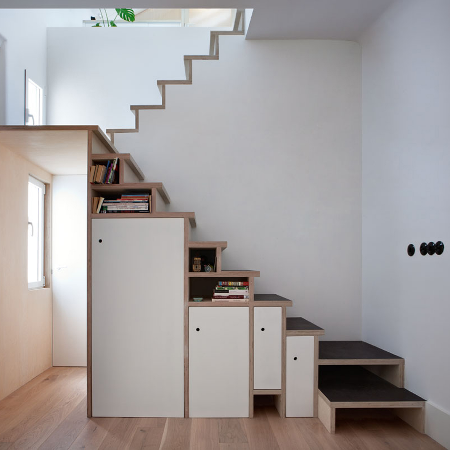
Step Storage: 7 Creative Under-Stairs Storage
Friday, November 20, 2020
The empty space under the stairs sometimes gets a bad rap on account of the many stories depicted in film that paint this potential storage space as a nest of insidious horror - or at the very least, a place of relative obscurity where things go to be forgotten. But in this modern age of urban living - where gratuitous space typically comes at a premium, we felt it be prudent to look at these spaces under the stairs in a new light, in order to discover novel ways of incorporating storage options.
Climbing Cabinetry
 Image Credit: Buj+Colón Arquitectos
Image Credit: Buj+Colón Arquitectos
In a compact space where a full-fledged staircase would have been overwhelmingly large, a lightweight stairway is formed out of progressively taller cabinets and bookshelves, with an intermediate split-level landing simplistically projecting from the top of the cabinetry. The result is deliberately left without a railing to achieve an unobtrusive stairway that is ingeniously disguised as storage.
Footwear Hideaway
 Image Credit: Post Architecture
Image Credit: Post Architecture
The act of removing one’s shoes when entering a home has transitioned from being a distinctly Asiatic custom of tradition to a practical measure in many urban homes around the world - which necessitates considerable storage fixtures to be incorporated at the entryway. The pictured shoe drawers, designed by Toronto-based Post Architecture, enable a sizable family’s worth of shoes to be neatly stowed away in the unassuming space beneath the stairs.
Stairway Stack
 Image Credit: Schemaa Architects
Image Credit: Schemaa Architects
While a stairway with a steep incline may present a formidable barrier to the upper floors, the complete use of extra space for cabinetry helps to disguise the risers and treads of the pictured loft-style staircase. To soften the gradient of the stairway, Schemaa (a Parisian architecture firm) incorporates intermediate blocks of wood to break up the high risers of the steps - resulting in a more graceful incline.
Aperitif Alcove
 Image Credit: DIY Network
Image Credit: DIY Network
An alternative to wholly dedicating the space under the stairs to storage is put forward by the DIY Network’s Watson Hawkins. The idea entails moving beyond pure storage and adding a facet of functionality to the space. In the pictured example, nearby countertops are extended to the space beneath the stairs, with cabinetry truncated at an angle to match the slope of the stairway’s carriage.
Sequestered Office
 Image Credit: Translina
Image Credit: Translina
For the majority of those who often find themselves working at a desk while at home, the extra headroom often goes to waste during those hours seated at a desk. Rather than dedicating an entire room to a home office and letting that overhead volume go unused, the pictured staircase incorporates a diminutive office space - where the lower clearance serves to neatly encapsulate the work corner.
Foyer Fixtures
 Image Credit: Minimalist Desk
Image Credit: Minimalist Desk
Walking out of the front door is a ritual that often gets repeated whenever a necessary object gets left behind - with the procedure often followed by dashes up and down the stairs to retrieve some forgotten item. The entryway often gets cluttered with catch-all containers and furniture as a result. The pictured stairway holds an ordered array of wicker baskets in niches beneath the carriage to negate the clutter and hide vital containers from sight.
Hidden Habitat
 Image Credit: Basement Remodeling
Image Credit: Basement Remodeling
Spaces deemed too small for a human to utilise can be handed over to our smaller companions instead. With their uniquely low-lying perspectives, even the smallest of burrows can shelter whole landscapes that are worlds apart from their larger environment. The pictured stairway accommodates a desk just wide enough to be used (by a human) for writing letters - with the extra headroom dedicated to wine storage, while the extra space to the side goes to one lucky quadruped.
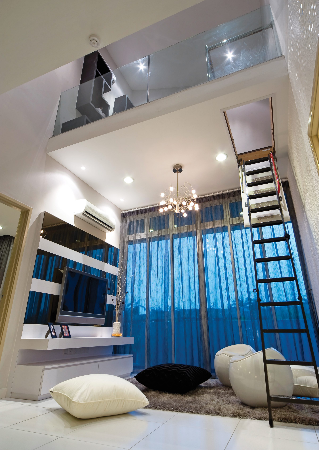
Choosing the Right Decorative Style for You
Friday, November 20, 2020
We've looked at kitchen countertop materials to describe various materials and how they may be suited to different personalities – but until now, we have not attempted to apply that same perspective to decorative styles. While decorative styles are probably as varied as people, we have been seeing some similar personalities gravitating towards particular aesthetic styles – which we will attempt to describe here for the benefit of anyone who might be in the midst of finding themselves and their preferred decorative style.
There are innumerable methods for analysing personality, but perhaps the most stringently tested theoretical framework would be that of the Big Five personality traits (openness, conscientiousness, extraversion, agreeableness, and neuroticism) – which will be the theory we adopt here in order to generally associate a particular decorative style with a dominant personality trait.
Openness
One of the first Big Five personality traits to be discussed is usually an individual's "openness to experience" – which roughly translates to a person's imagination and bravery to venture into uncharted waters. A person who is considered high in "openness" is regarded as being receptive to variety – easily gravitating towards learning, art, or other creative pursuits; while a person low in "openness" will display a preference for routine and representational works of art such as classical sculptures rather than abstract or interpretive designs.
 It takes a certain kind of bravery to seek out and incorporate unconventional features — such as the pictured loft space, made accessible with the addition of an industrial attic (loft) ladder. Interior design by: Nice-Style Refurbishment
It takes a certain kind of bravery to seek out and incorporate unconventional features — such as the pictured loft space, made accessible with the addition of an industrial attic (loft) ladder. Interior design by: Nice-Style Refurbishment
Historically accurate decorative styles such as faithful classicism may not be ideal for highly open individuals, who tend to prefer more varied, esoteric, or eccentric blends of styles to reflect their unique tastes. An open person would seek to forge a unique décor wherever possible – perhaps even going as far as rearranging entire floor plans to achieve something different. On the flipside, a less open person may gravitate toward styles that are more commonly represented in today's homes – or even a style representing something from childhood – while adhering to the convention of the day as much as possible.
Conscientiousness
Describing how people react to expectations of society at large, a person high in conscientiousness is more likely to consider rules both written and unspoken – such as is required when attempting to pay tribute to classical aesthetics. A highly conscientious person considers the experience of guests and visitors more than their own comfort, and will likely seek out a familiar décor – such as a variation of modern contemporary or classical modern style – to achieve a comforting ambience for the benefit of others while aiming for the hallmarks of luxury.
 A conscientious homeowner seeks to enforce implicit aesthetic rules rather than break them. Designer: Design Integra
A conscientious homeowner seeks to enforce implicit aesthetic rules rather than break them. Designer: Design Integra
A less conscientious individual may be seen as unpredictable and impulsive – and the right decorative style in this case is more a matter of personal preference than anything else. A person low in conscientiousness will likely gravitate towards a unique décor to represent their singular personalities, rather than adhering to convention for the satisfaction of guests.
Extraversion
The dichotomy of extraversion and introversion is perhaps the most popular of facets in personality research – a person is considered extroverted when they display an innate attraction for social activity, while an introvert is one who values alone-time over a stint of hanging out.
 The home of an extravert will more than likely present bold shades favoured by exuberant personalities. Interior design by: Surface R
The home of an extravert will more than likely present bold shades favoured by exuberant personalities. Interior design by: Surface R
Extroverts plan their home around social events, considering factors like the placement of extra seating and opting for bold colours rather than relying on a neutral palette. Introverts, on the other hand, will prefer to design for personal comfort and use softer colours in the creation of solitary spaces such as the study or the bedroom.
Agreeableness
A person is considered agreeable when they display a high sensitivity for the feelings of others – and their decorative choices might closer reflect the norms of modern styling, while less agreeable individuals may be seen as being more concerned with their own avenues of self-expression.
 Individuals high in agreeableness will tend to prioritise the familiarity of the neutral palette and twentieth-century designs over self-expression. Interior design by: Alpex Design
Individuals high in agreeableness will tend to prioritise the familiarity of the neutral palette and twentieth-century designs over self-expression. Interior design by: Alpex Design
The most intriguing and awe-inspiring decorative styles are to be found in the homes of less agreeable individuals – while one can expect something more contemporary, less esoteric, and with greater mass-appeal in the home of an agreeable person.
Neuroticism
As a measure of emotional stability and how well a person copes with stress, the trait of neuroticism is not as well associated with any particular decorative style as any of the four previously described personality traits – but some conclusions can still be drawn. For instance, a highly neurotic person with a stressful career may have no use or appreciation for a study — the mere sight of a workstation may elicit feelings of frustration in the home.
 A carefree personality, low in neuroticism, lets stress roll right off and wouldn't be the least bit disturbed by clutter or asymmetry. Interior design by: Pins Studio
A carefree personality, low in neuroticism, lets stress roll right off and wouldn't be the least bit disturbed by clutter or asymmetry. Interior design by: Pins Studio
Neuroticism also informs how one deals with clutter in the home, a person who is more inclined to keep spaces clean, and is also less willing to cope with the stress of a mess, will likely be on the lookout for storage options – while the messier and less neurotic among us may not have even considered cleaning up at all.

How to Enhance Your Kitchen With a Breakfast Bar
Friday, November 20, 2020
Cooking spaces are an irresistible draw for some people and a kitchen island will make them feel welcome.
As noted by televised interior designer Candice Olson, the modern kitchen is less one person’s domain as it is a space for interactive cooking between family and friends — with the modern conventions of open floor plans and relaxed banquet protocol often leading to an accumulation of dinner guests in the kitchen.
 Interior design by: Pins Studio
Interior design by: Pins Studio
The sight of an island counter in the kitchen presents an inviting atmosphere that simultaneously helps to keep the operative area clear of pedestrians and encourages the curious guest to slide in for a respite or lean against it in casual repose. Knowing that everyone would be gravitating towards the kitchen during gatherings, we thought it prudent to review some of the ways you could add an island counter.
Practical Element
Instead of having the breakfast bar rise from the centre of the layout like a monolith, you could also merge the island with the rest of the kitchen to minimise its intrusion into a compact space. Pins Studio demonstrates a space-saving configuration in the pictured galley, by extending a counter into the centre of the walkway, effectively turning the two-wall layout into a multi-faceted workspace that simultaneously keeps guests away from exposed heat sources while providing a vantage point from which they can safely observe the proceedings and engage in conversations with the chef.
Stylish Seats
 Interior design by: Mode Interior Style
Interior design by: Mode Interior Style
Fashion arbiters are almost uniformly in agreement when it comes to the effect of accessorising—it is often said that the same piece of clothing can be presented in a multitude of different ways when combined with a purposeful selection of decorative accessories.
 Interior design by: Mode Interior Style
Interior design by: Mode Interior Style
As demonstrated in the pictured kitchen, Mode Interior Style differentiates the neutral coloured space with the addition of wire-framed lighting fixtures and bar stools. Although lightweight and unobtrusive in their design, their presentation in the foreground of this space draws the eye away from a simplistic background of rectangles coloured in the shades of the neutral palette.
 Interior design by: Mode Interior Style
Interior design by: Mode Interior Style
Twists and Turns
 Interior design by: Alvinterior Concept
Interior design by: Alvinterior Concept
A kitchen melded with an open floor plan presents an opportunity for creative expression in much the same way as a blank canvas invites an artist’s touch, and an island counter turned into a piece of artistic expression on its own often represents the most defining element of a truly unique kitchen.
 Interior design by: Alvinterior Concept
Interior design by: Alvinterior Concept
Alvinterior Concept sets the pictured cooking space apart from all others by rendering the breakfast bar with novel lines and angles, resulting in a functional sculpture of form and purpose at the edge of the chef ’s domain.





